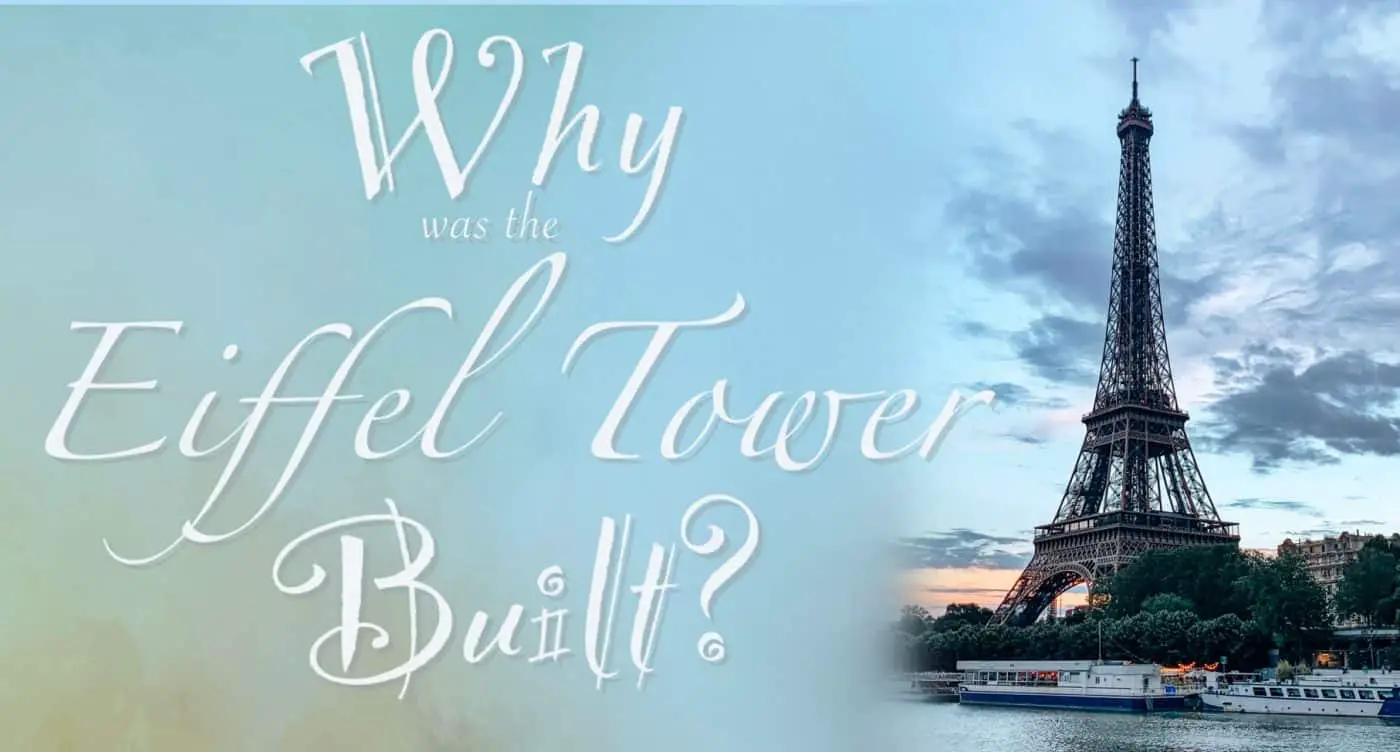French Culture
Why Was the Eiffel Tower Built?
Paris has beautiful scenery, incredible cuisine and so many different things to go see and do.
At the very top of the list, however, is the crown jewel of the city, The Eiffel Tower.
Many people know of the Eiffel Tower but might not know the origins of the iconic symbol of the city of light.
We’re going to look at the origins of the monument and examine its fittingly notable history.
Some Context..
The Eiffel Tower was built from 1887 to 1889 by French Engineer Gustave Eiffel, hence the name of the monument.
His company specialized in building metal frameworks and structures, and he was the creator of many metallic works across Europe.
His artistic mark was impressed upon the culture everywhere from Portugal to Hungary.
Gustave’s company also was the inventor and creator of the metal internal framework of The Statue of Liberty, designed by Auguste Bartholdi and offered to the United States as a gift to celebrate the 100th Anniversary of the nation’s independence in 1886.
so why was the eiffel tower built?
The Eiffel Tower was built to be one of the main attractions of The Paris World Fair in 1889.
The Fair covered the entire Champ de Mars in Paris and its main focus was the industrial advancement and use of iron and steel in construction and the impact it’s had on the industry.
It was first called the 300-meter tower but it quickly took the name of the man who built it into what we know today, The Eiffel Tower. The monument opened on May 15th, 1889.
It was also a commemoration of France’s own independence and the centennial of the French Revolution.
The Revolution was aimed at eliminating the divine rights of kings and ending dictatorships to install a democratic system of government.
Leading up to the World Fair, the organizers held a design competition all over France to come up with different ideas on how to improve the city, and the tower was one of the frontrunners of the race.
Additionally, at the time, The Eiffel Tower was the tallest building in the world.
This structure showed promise for industrial revolution and advancement in the future and propelled the already motivated French builders to execute this project.
The Controversy Surrounding the Eiffel Tower
While some people were celebrating the progress and looking forward to the display of revolution, others were disappointed in the construction.
Some even calling it a “truly tragic streetlamp,” a “mast of iron gymnasium apparatus, incomplete, confused and deformed.”
Thankfully, the construction was carried out and is now the unmistakable symbol of the city, but at the time, it was not revered as such.
Even before the construction commenced, the Eiffel Tower was met by mass protests led by Parisian critics who called the landmark a disastrous eyesore.
A group of famous artists even gathered a petition to shoot down plans for the monument. They filed an article in Le Temps to publicly express their disdain for the piece:
“We have come, writers, painters, sculptors, architects and passionate devotees of the hitherto untouched beauty of Paris, to protest with all our strength, all our indignation, in the name of slighted French taste…against the erection, in the heart of our capital, of this useless and monstrous Eiffel Tower…
Will the city of Paris go on to associate itself with the baroques, with the mercantile imaginations of a machine builder, to become irreparably ugly and dishonor itself? For the Eiffel Tower, which commercial America itself would not want, is, doubtless, the dishonor of Paris.
Everyone feels it, everyone says it, everyone deeply grieves it, and we are only a weak echo of the universal opinion, so legitimately alarmed.”
Designer Gustave Eiffel argued that they were not only a country of artists and entertainers, but also engineers and builders with the desire to have their vision seen and their progress made.
In hindsight, it appears that Eiffel was right. In 1887, the French government determined they agreed as well and construction on the monument began.
Additional Threats to The Eiffel Tower
The Eiffel Tower was initially supposed to be torn down after 20 years.
It was a temporary show of France’s Industrial gains, but not intended to last forever as a historic landmark.
In the end, it not only became too prominent as a city symbol, but also, Eiffel had placed a radio transmitter at the top, making the tower both too expensive and too useful to demolish.
When Germany occupied France during World War II, Hitler ordered that the Eiffel Tower be torn down, but the order was obviously never carried out.
French resistance fighters, in the end, got their revenge, they cut the elevator cables so that The Nazis would have to climb the stairs to hoist their flag.
Conclusion
The Eiffel Tower is a beautiful and scenic monument that had to overcome adversity and protest to just be built, showing us that the origin story of this great tower is just as important and historic as it stands today.
Great things are difficult to do, and we see that with the construction of this incredible and culturally rich symbol of Paris.

